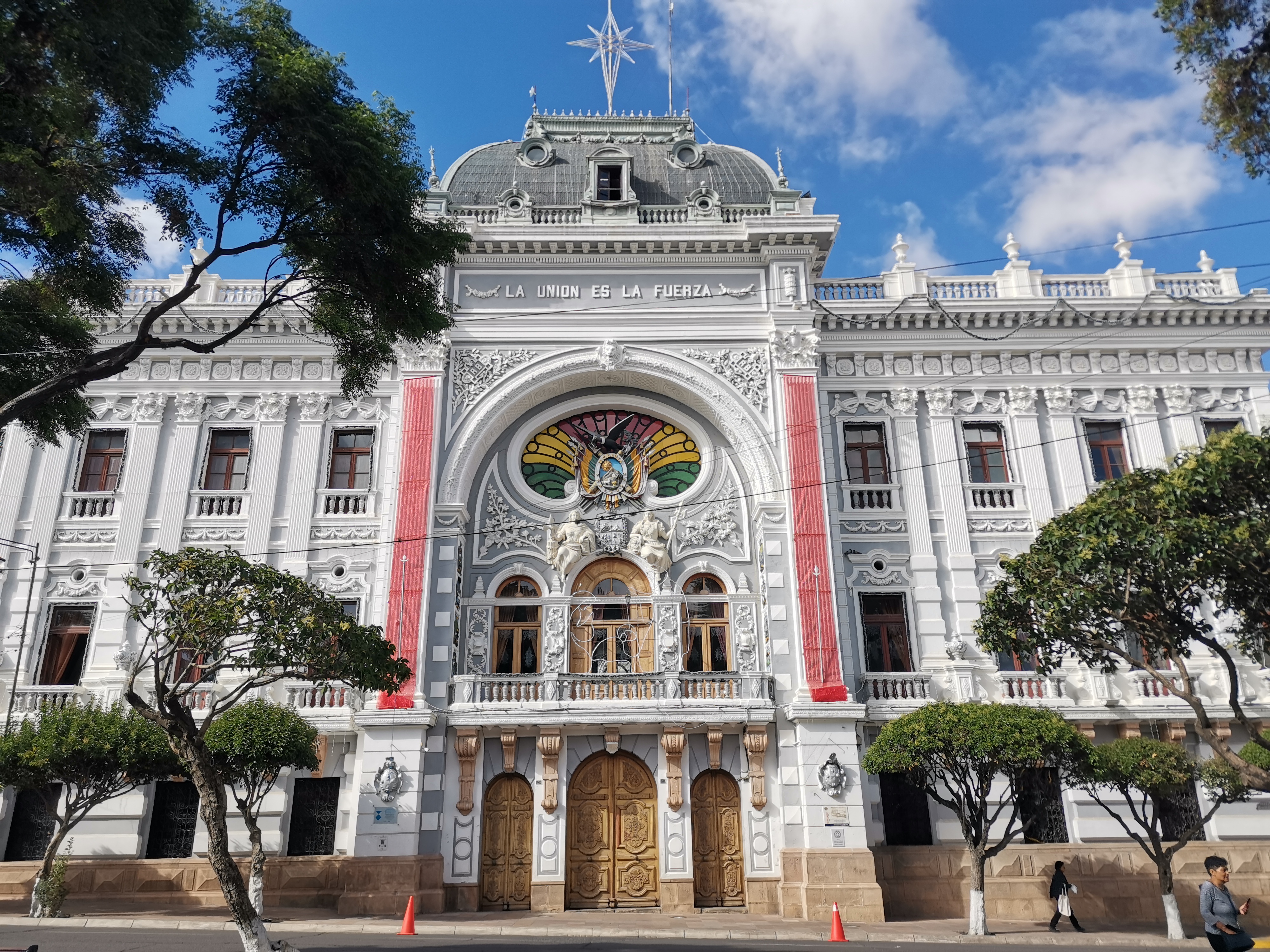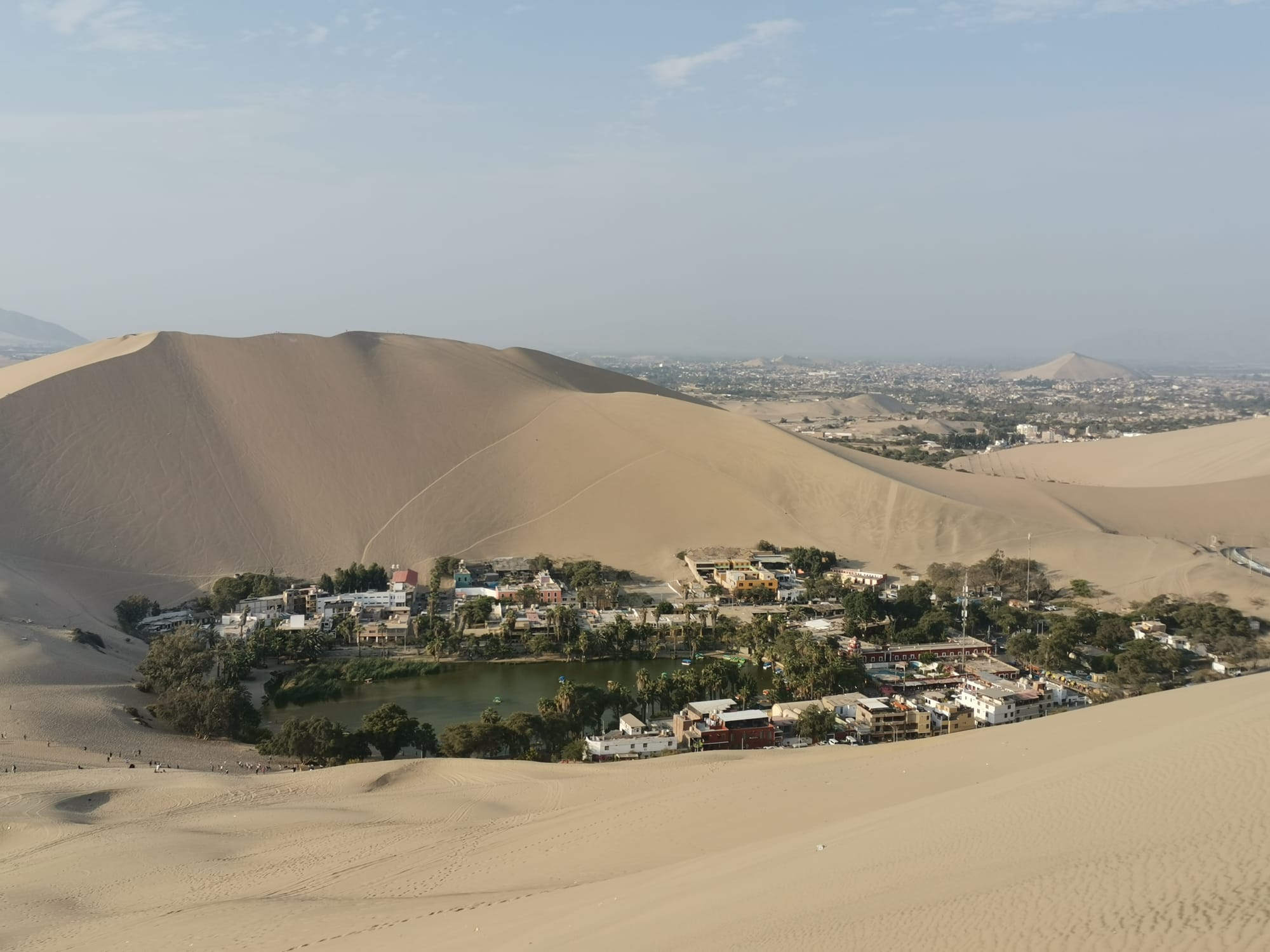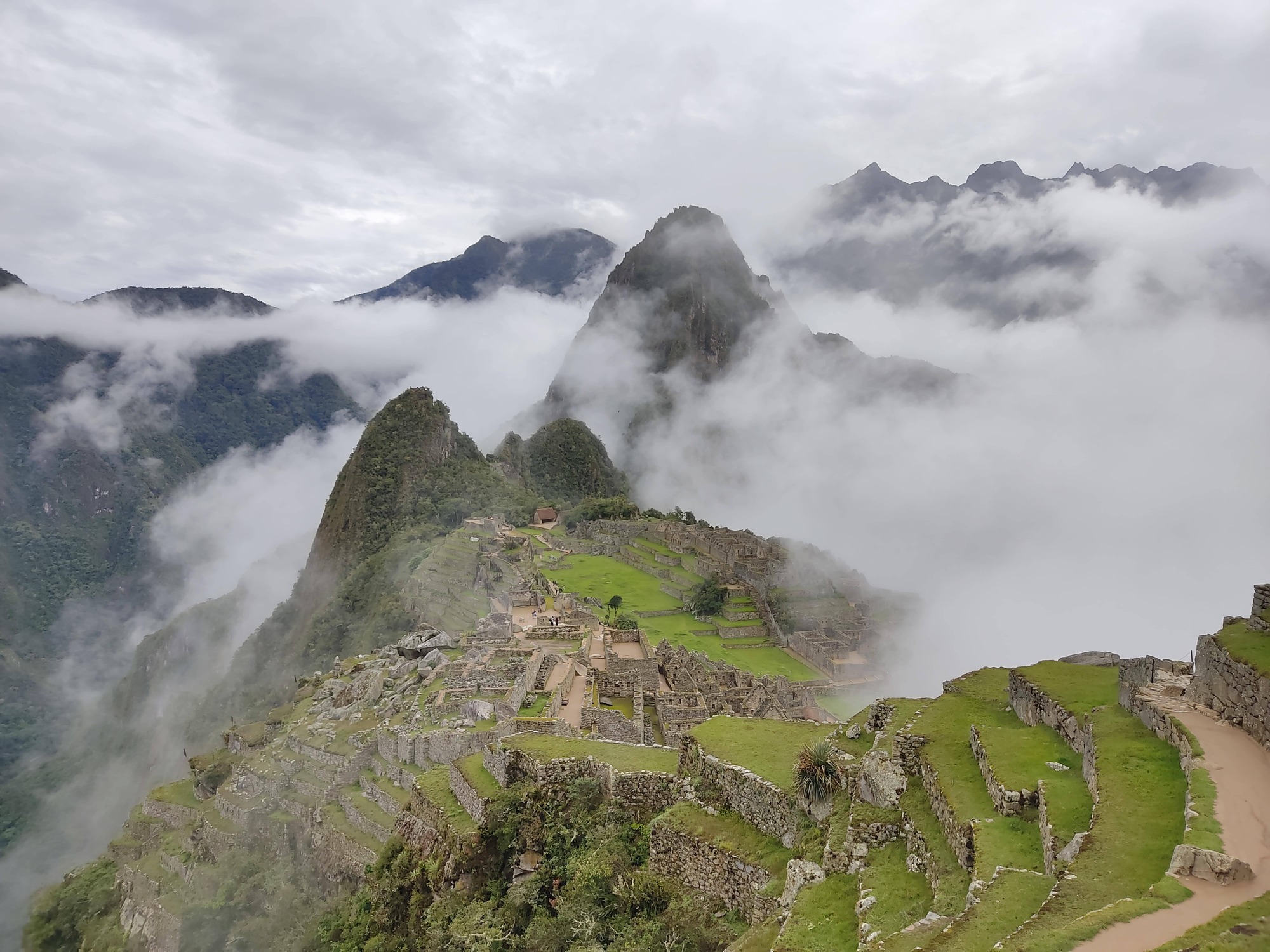Introduction
Although the commercial hub of Bolivia is in the much bigger city of La Paz, Sucre was officially declared the capital city for patrioticBolivia's independence movement first began in Sucre, and so it was named as the capital when the nation eventually gained freedom from the Spanish empire. As the silver trade declined and La Paz boomed, an attempt was made to relocate the capital to the larger and more prosperous city. However, the transition met fierce patriotic opposition, and so La Paz never became the full capital city. reasons, and also because of its central location and pleasant climate. However, despite its capital status, Sucre is much smaller than other Bolivian cities, and feels less tradionally 'South American' than the rest of the country. It is full of European architecture, and has a large expat population, but still has the bustling Bolivian-style markets and friendly locals, creating a mix of cultures. Unlike larger, overdeveloped colonial cities, Sucre maintains its architectural style in virtually every single building, with every street matching the ornate white aesthetic (reminding us a bit of Arequipa in Peru). Sucre has some lively markets, relaxing plazas, incredible viewpoints, and renowned restaurants to be discovered, making it the perfect place for some R&R, which is always needed on a long backpacking trip!
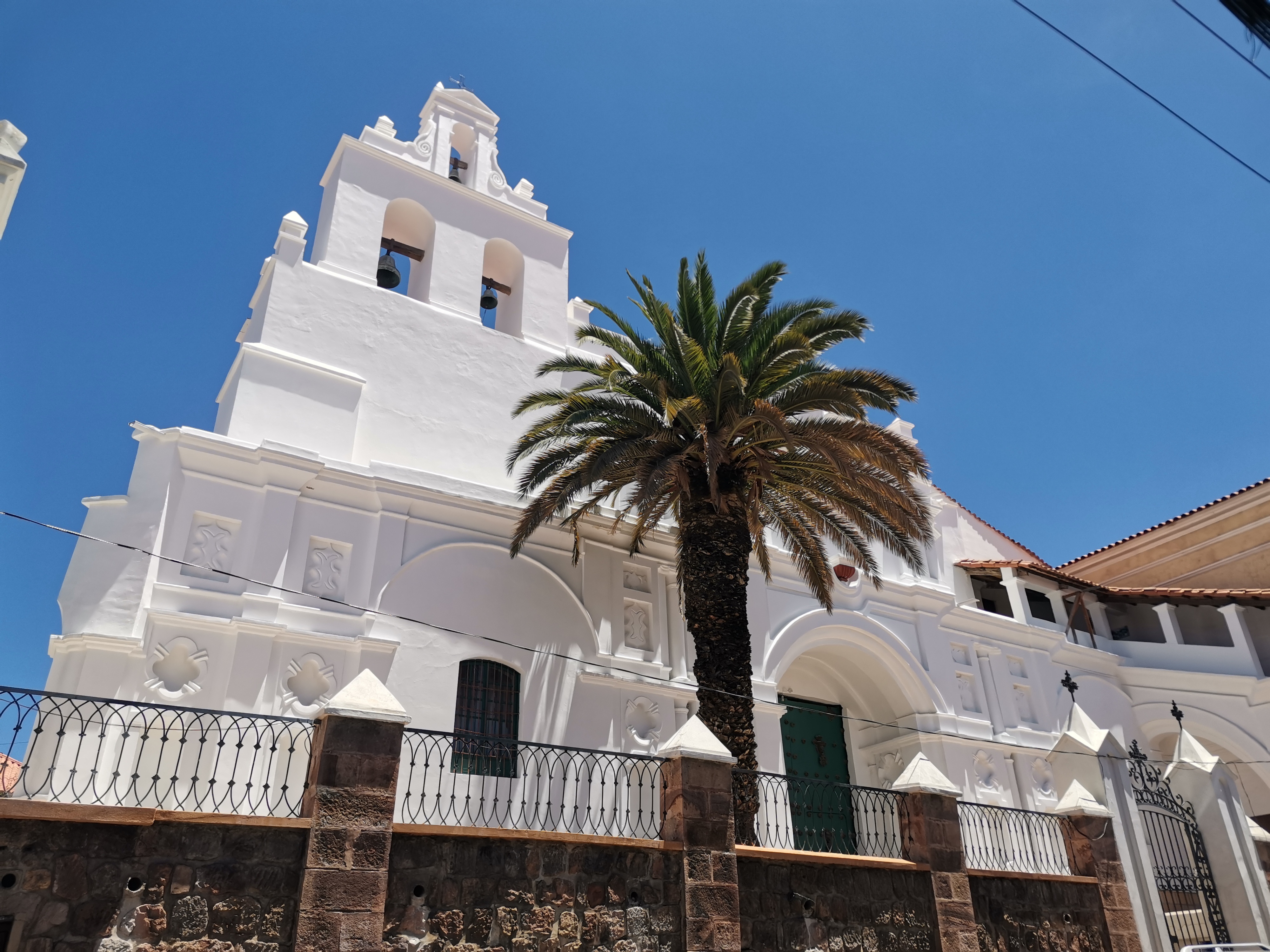
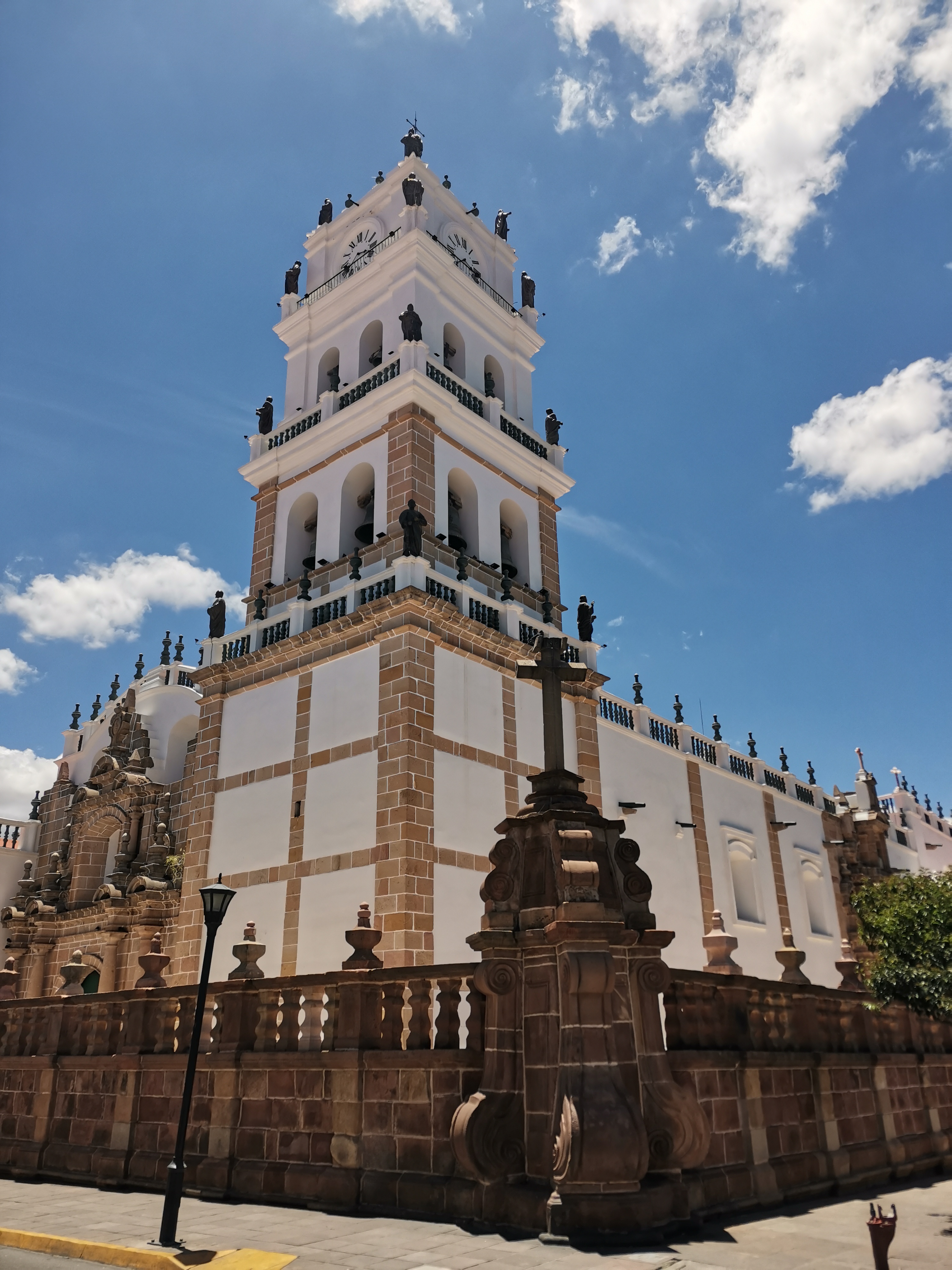
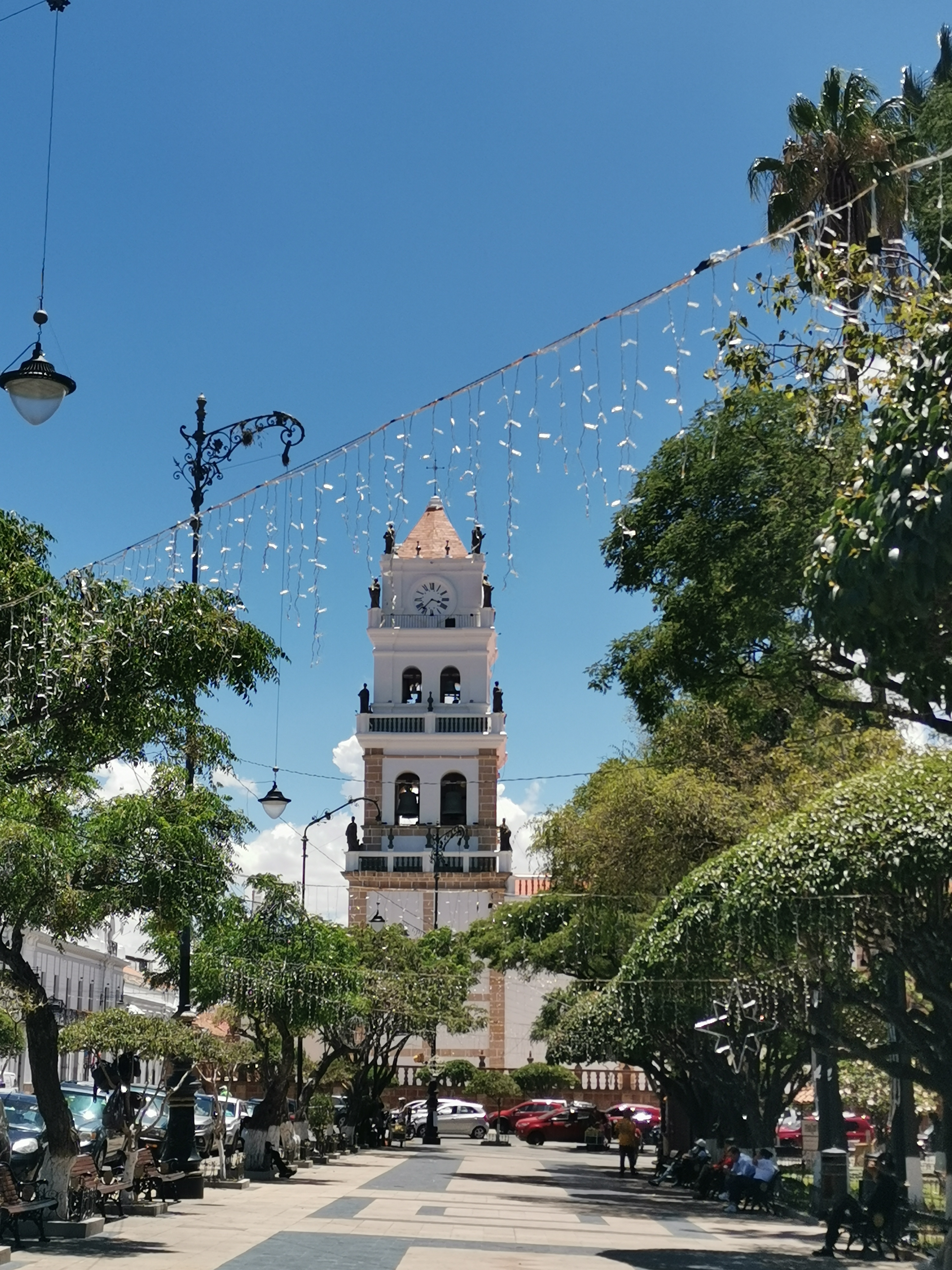
Architecture
Most visitors are drawn to Sucre for its impressive architecture, and can't help but be amazed by its beauty and how well maintained the city's buildings are. Like most South American cities, the main plaza is surrounded by towering buildings with colourful, ornate facades, and filled with a range of people relaxing and enjoying the mild climate. However, in Sucre, this ambiance extends throughout the entire city centre. Some streets are lined with large, imposing manors, while others resemble quaint cobblestone alleyways, but the entire city centre is a joy to explore, with a picturesque scene around every corner. Junctions are marked by little white churches or small green plazas, where locals and tourists gather to enjoy some street foodFresh fruit, churros, popcorn, ice cream, and a range of other snacks are on offer from the street vendors in Sucre. We made friends with one man selling freshly pressed orange juice in the centre, and as we became regular customers, he was very friendly and always gave us a little extra.
As a side note, no matter how hungry you get, don't buy the bags of nuts/seeds from the sellers in the plaza - this is actually bird food to throw for the pigeons!. As with everywhere in Bolivia, the city was filled with friendly and welcoming locals.
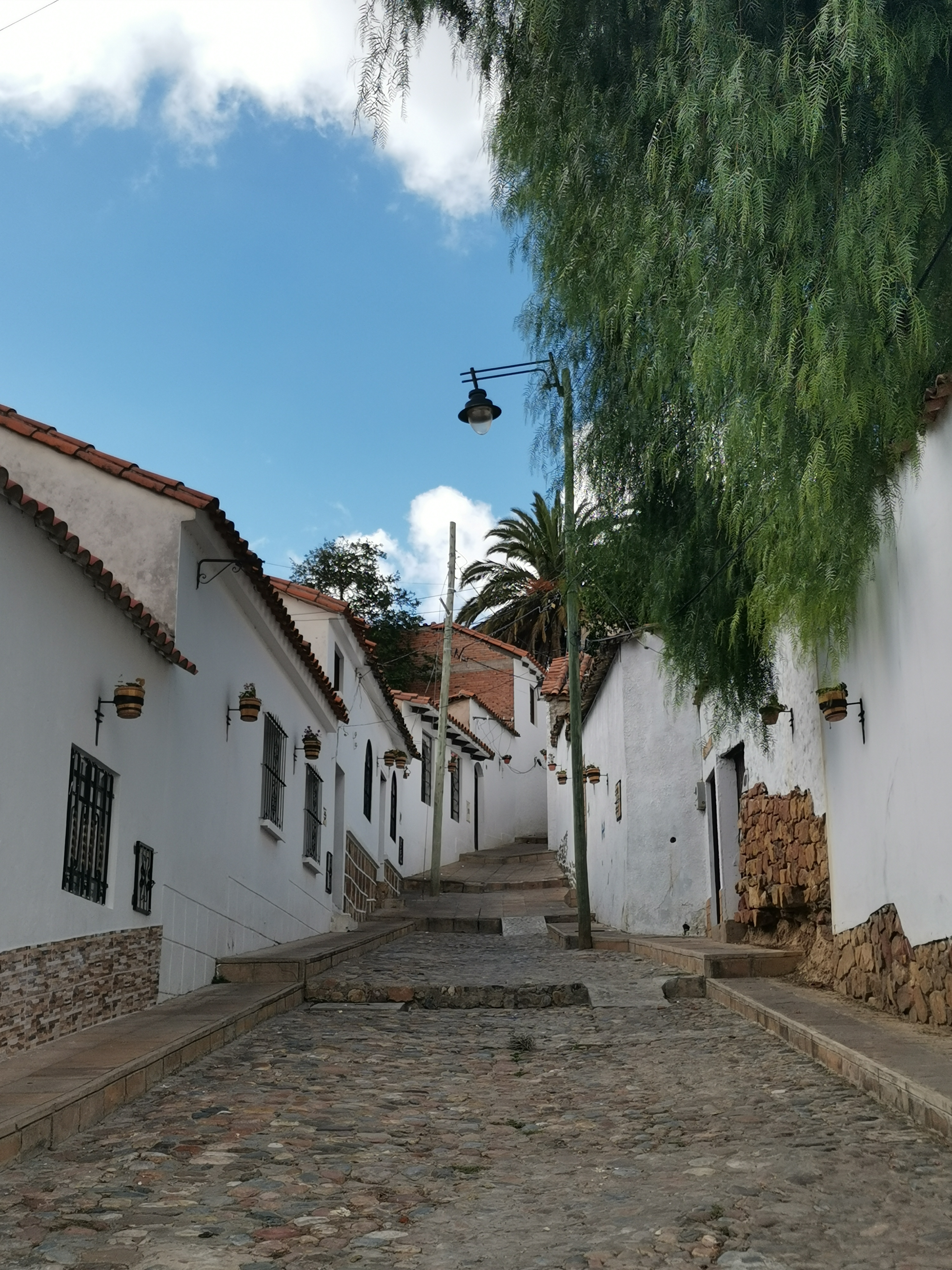

One of the most impressive of all of Sucre's buildings is La Glorieta castle. Located slightly out of town, this castle-like palace is tucked behind rolling green hills, and feels slightly surreal. The outside is entirely clad in rose-coloured pastel paint, creating a uniquely soft an inviting feeling to the otherwise intimidating structure. The tallest tower The prince and princess who lived here used their immense wealth from the mining industry to open 2 orphanages in Sucre, and they also frequently travelled to Europe. As a result, the three towers of the palace are each inspired by different architectural styles from around the World, with one being topped with a Chinese-style pagoda, and the others designed to mimic a British bell-tower, and a Russian-orthodox structure. can be climbed at no extra costThe entrance fee to explore the palace was 25BOB, or approximately £2.90 for a breathtaking view of the entire grounds. All rooms within the palace's spacious interior, from the kitchen to the first-floor balcony, are open for visitors too. The palace is a bit out of the way, however it is easy to take the local number 4 bus for 2BOB (~£0.20) or a taxi to get there.
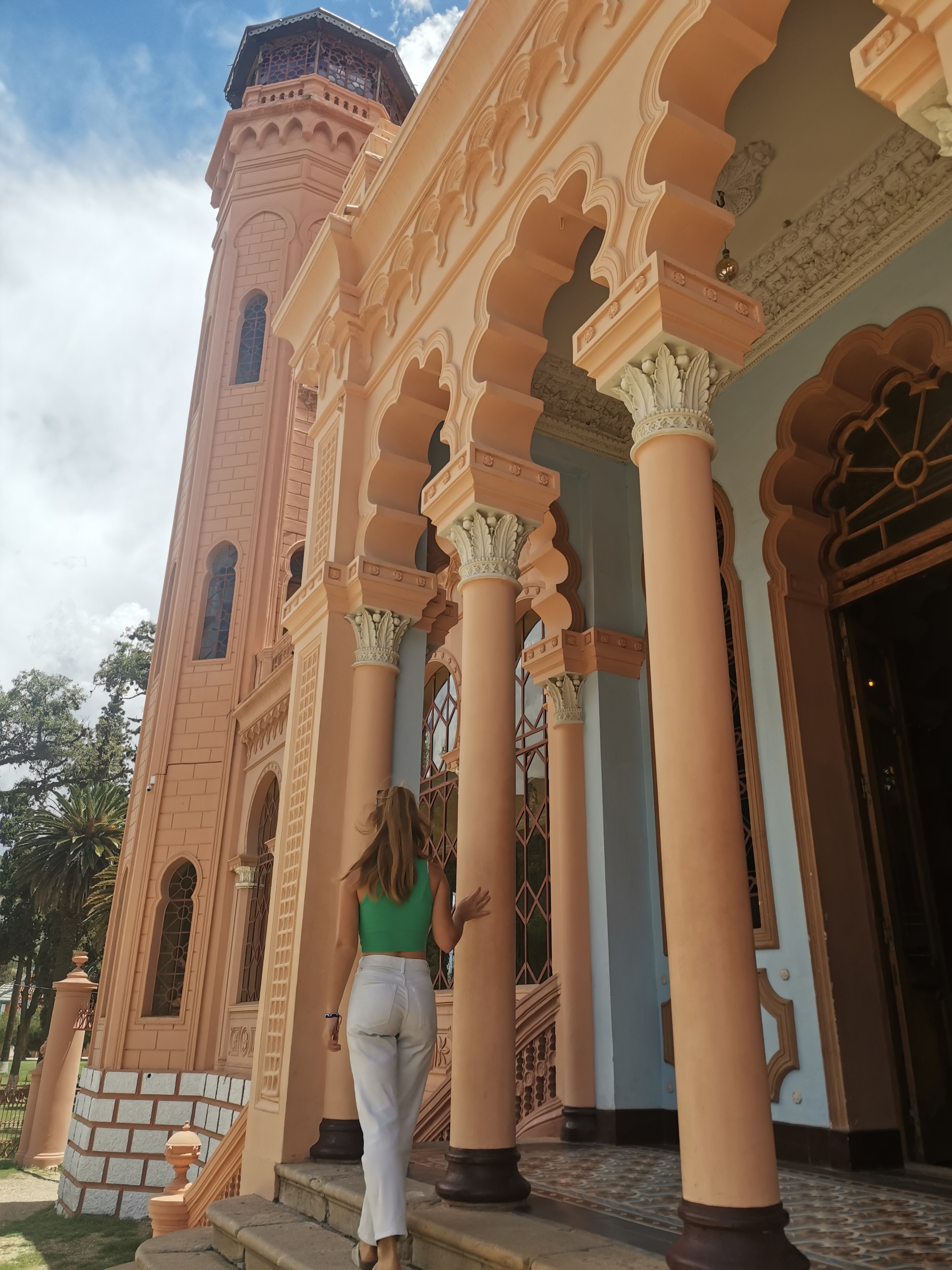
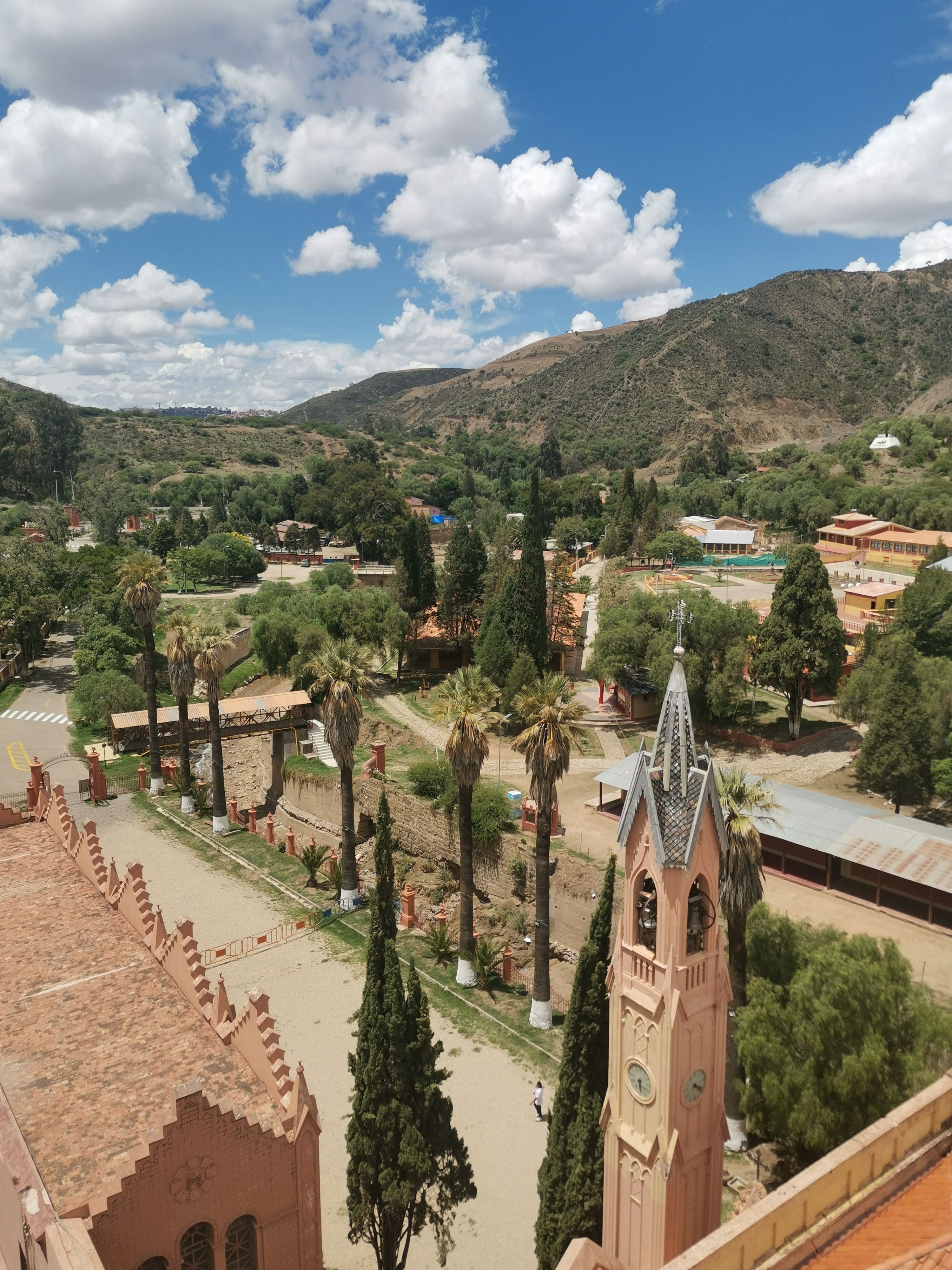
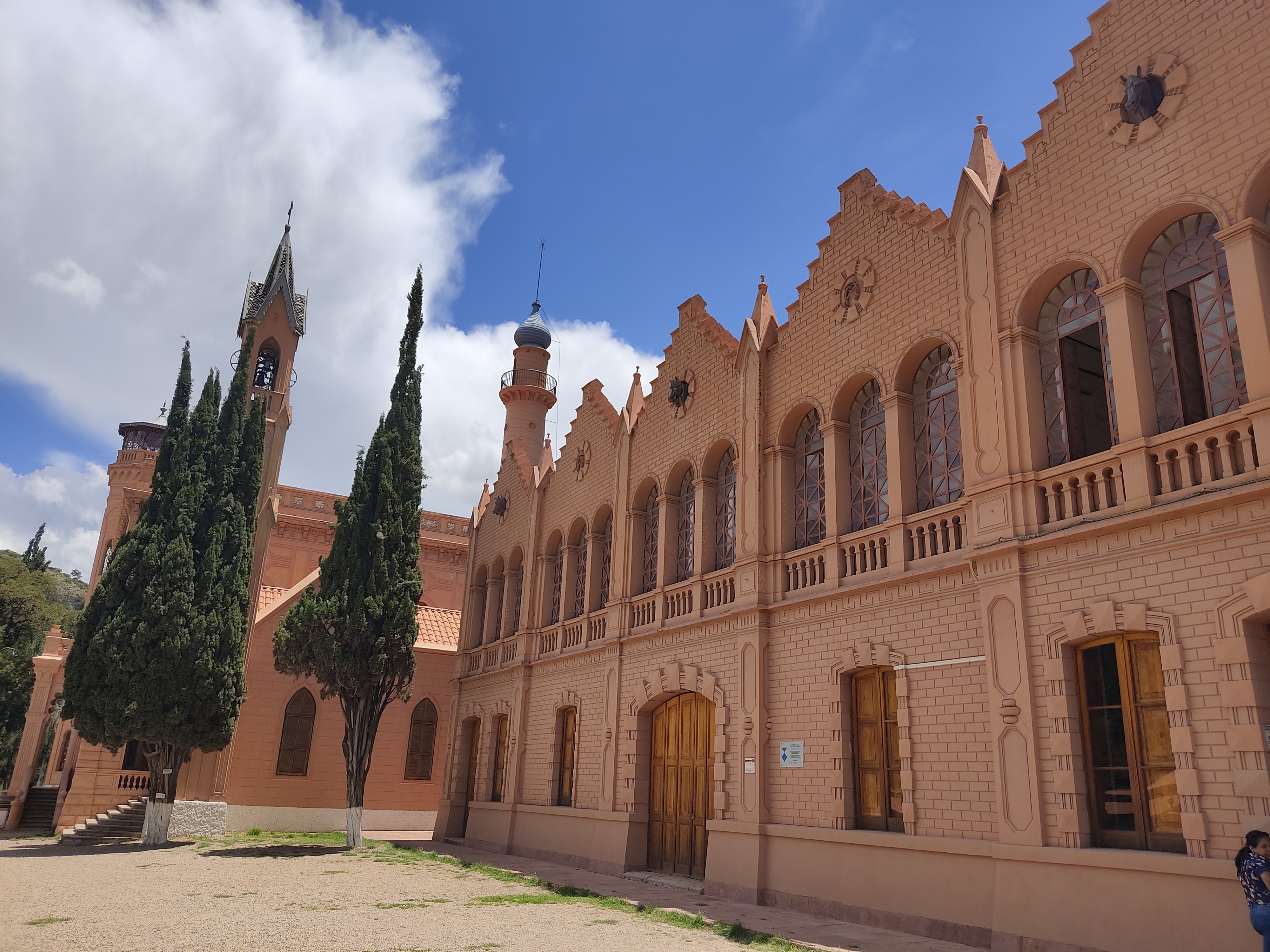
Viewpoints
It would be wrong to visit a city as pretty as Sucre, and not take a moment to appreciate the view from afar. Fortunately, in the Recoletta neighborhood, you can do just that. After climbing the steep, narrow streets up through the city's oldest area, you will reach the Plaza Pedro de Anzúrez. The square marks the spot where Sucre was first founded, and of course is lined with ornate buildings and charming decorations. However, the plaza is also situated high above the rest of the city, and provides a covered viewpoint where you can see across the compact red-roofed houses and to the mountains beyond.

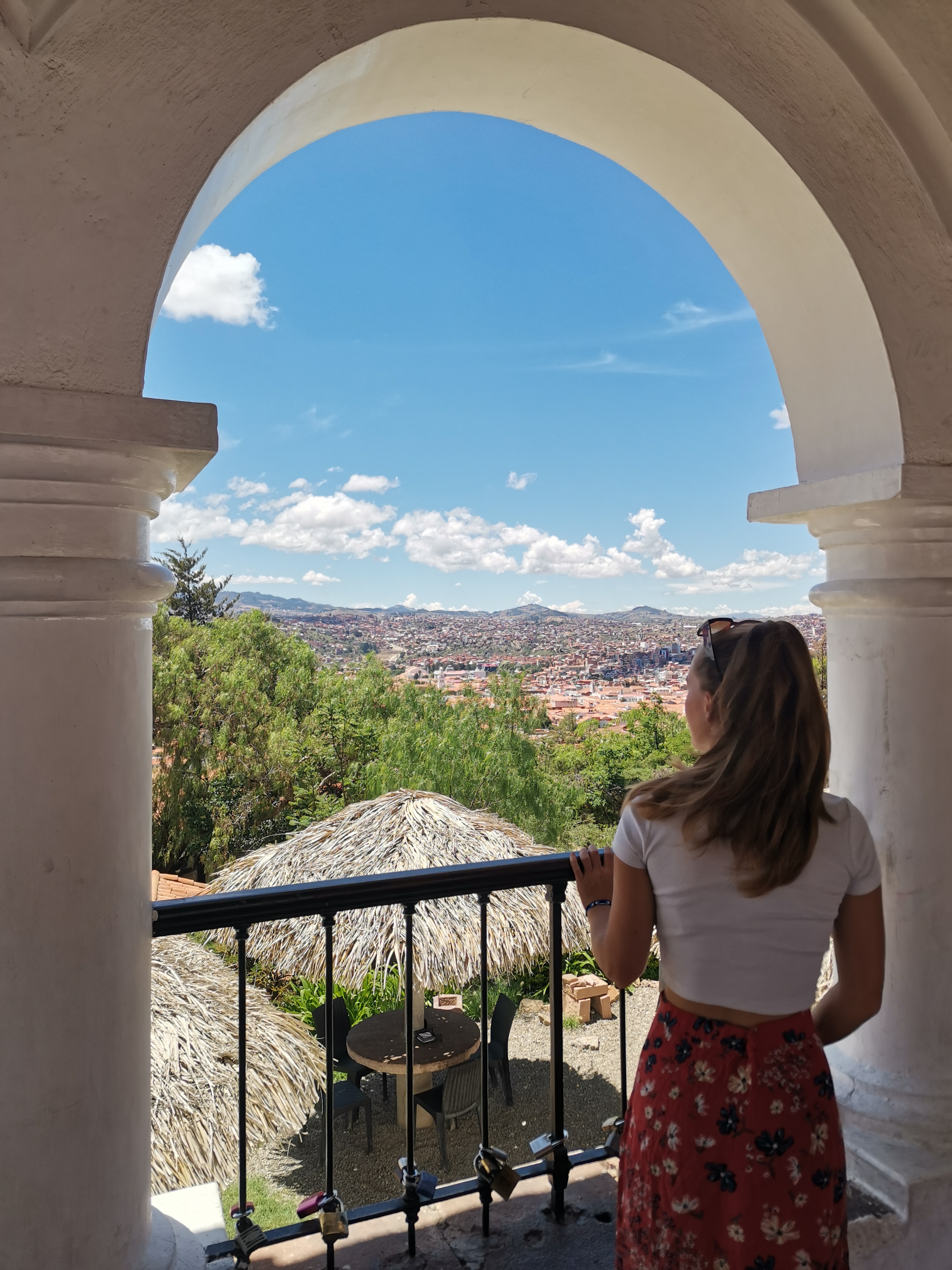
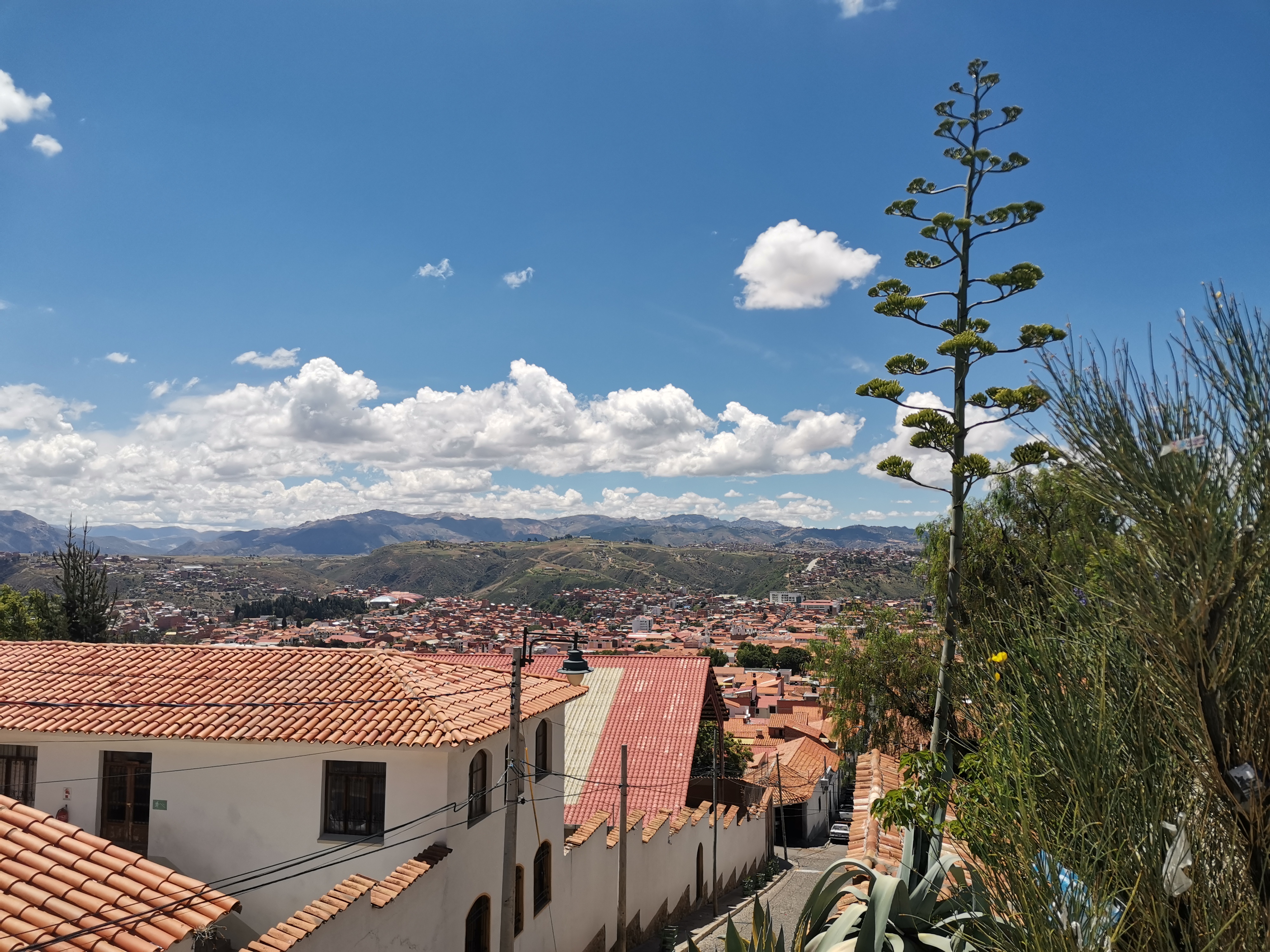
You can get a much closer view of the city centre from the Iglesia San Felipe de Neri. This church and monastery is used as a school in the mornings, but in the afternoons it opens its doors for tourists to explore. The balconies and courtyards, surrounded by white pillars, are another spectacular example of Sucre's architecture, and are incredibly photogenic from every angle.
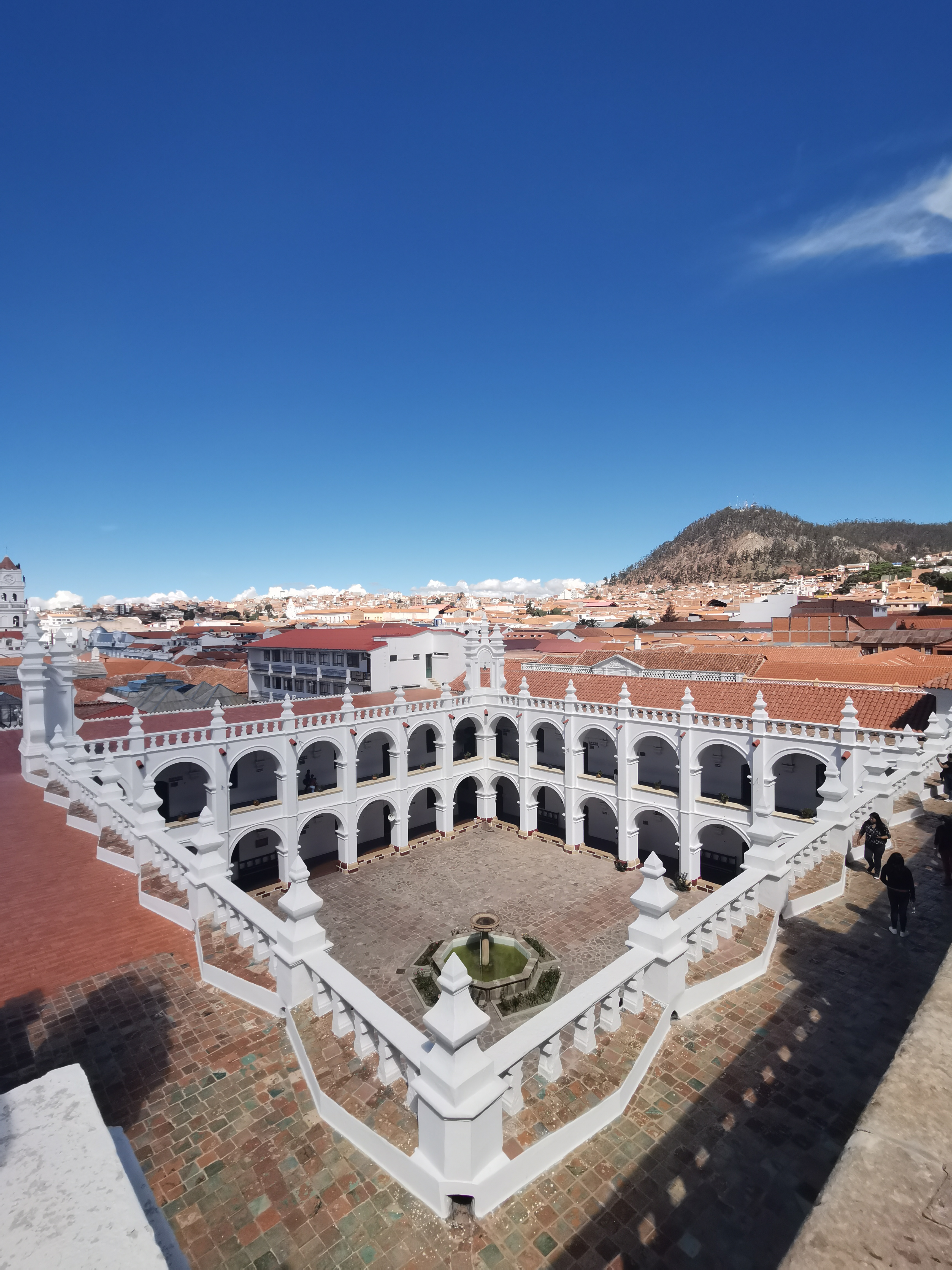
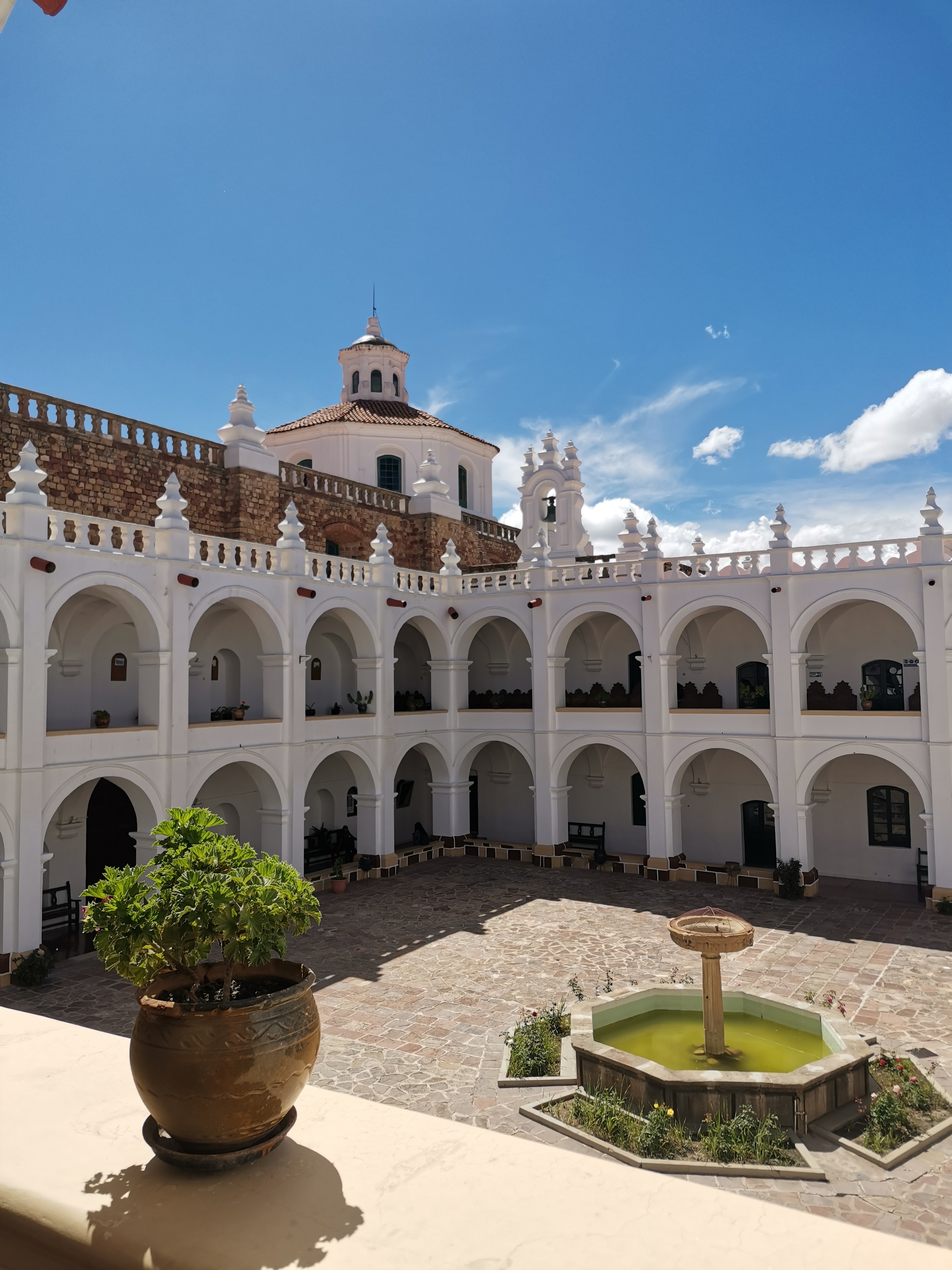
However, the main attraction of the convent is the rooftop, which can be freely explored in its entirety. Strolling around the steeples and belltowers and climbing up and down the uneven levels is a weirdly fun experience, however the main reason to explore the rooftop is the views it provides. Looking out between the surrounding houses and churches is a slightly surreal and unforgettable moment, and we made sure to enjoy every angle of it.
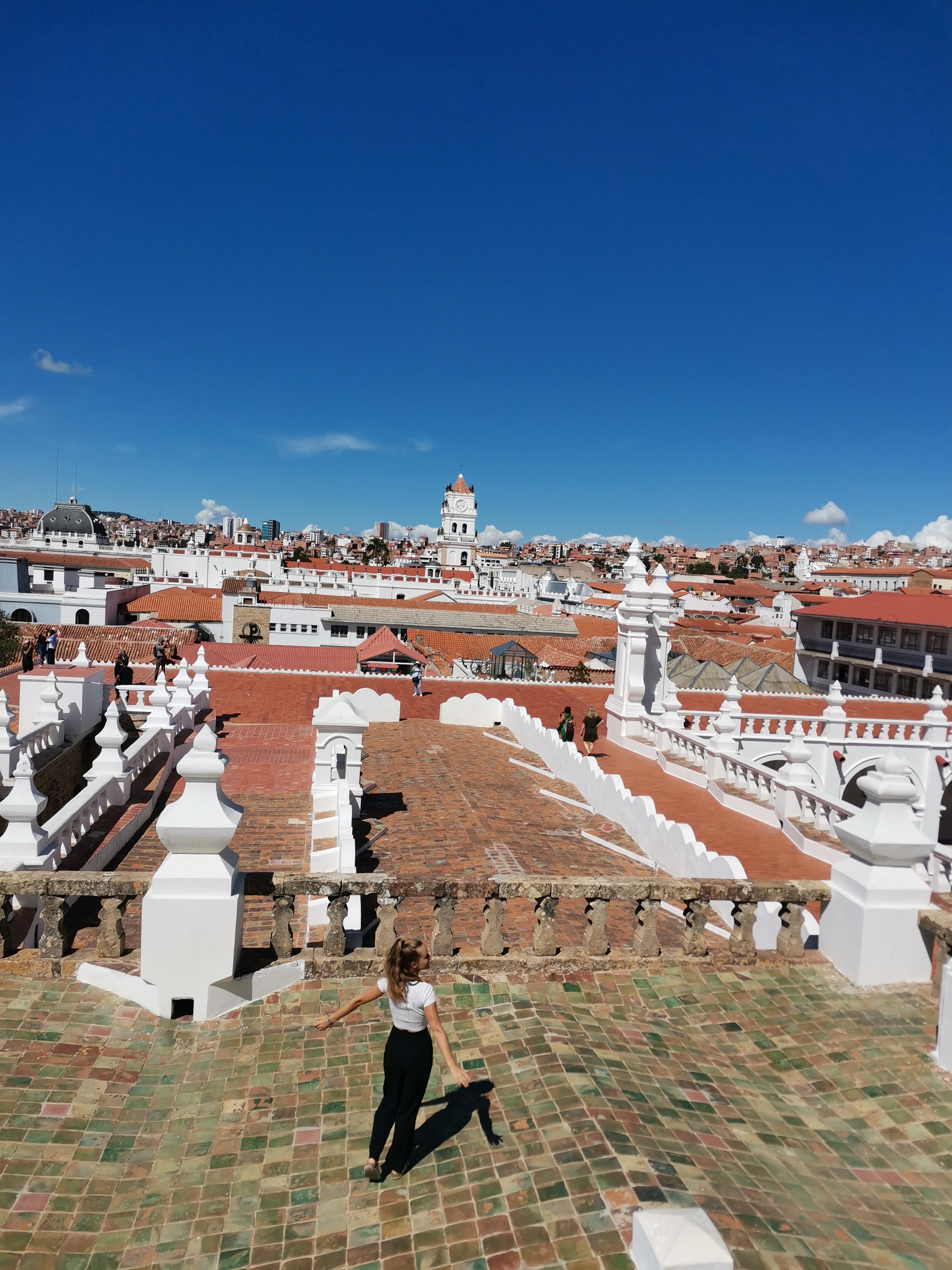

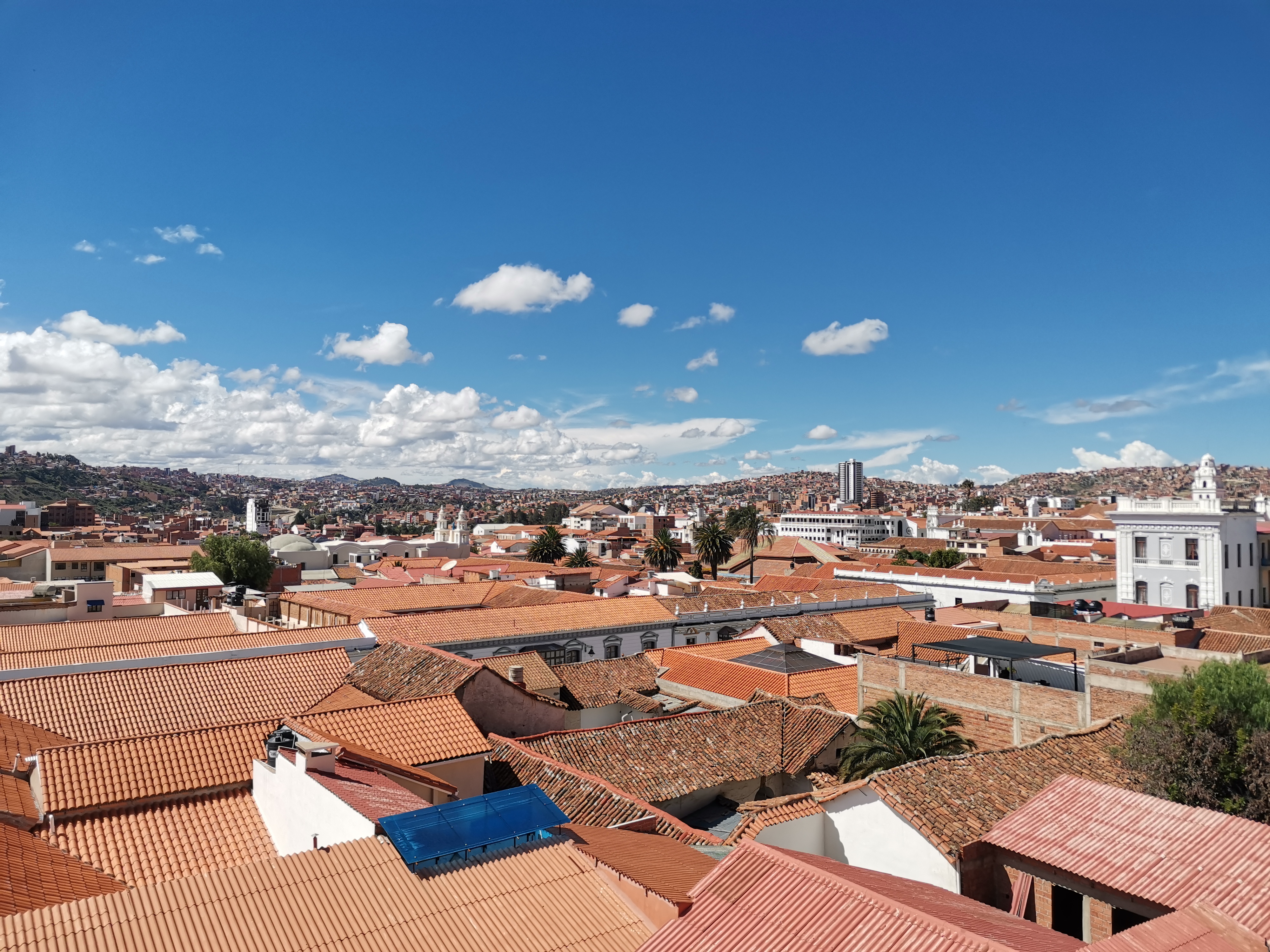
The views of incredible architecture isn't the only reason why Sucre attracts lots of visitors. The city is also known for being a bit of a language-hub, with countless Spanish schools offering lessons to tourists. Most people in our hostel would spend the mornings learning Spanish, before heading out into town to practice chatting with the friendly locals in the afternoon. The city is a very pleasant place to base yourself, and the locals speak slowly and without much of an accent, so it is a great place to learn some phrases that will come in handy later on during a long trip.
Outdoor Spaces
Sucre is one of the few Bolivian cities that isn't located in the chilly Andes or the humid rainforest, and has a reliably hot and sunny climate. Spending lazy days relaxing and basking in the sun is recommended, particularly on Sundays, when the main plaza (plaza 25 de mayo) and the streets within a 1-block radius are closed to traffic. This pedestrianised space is filled with musical performancesPerforming in the plaza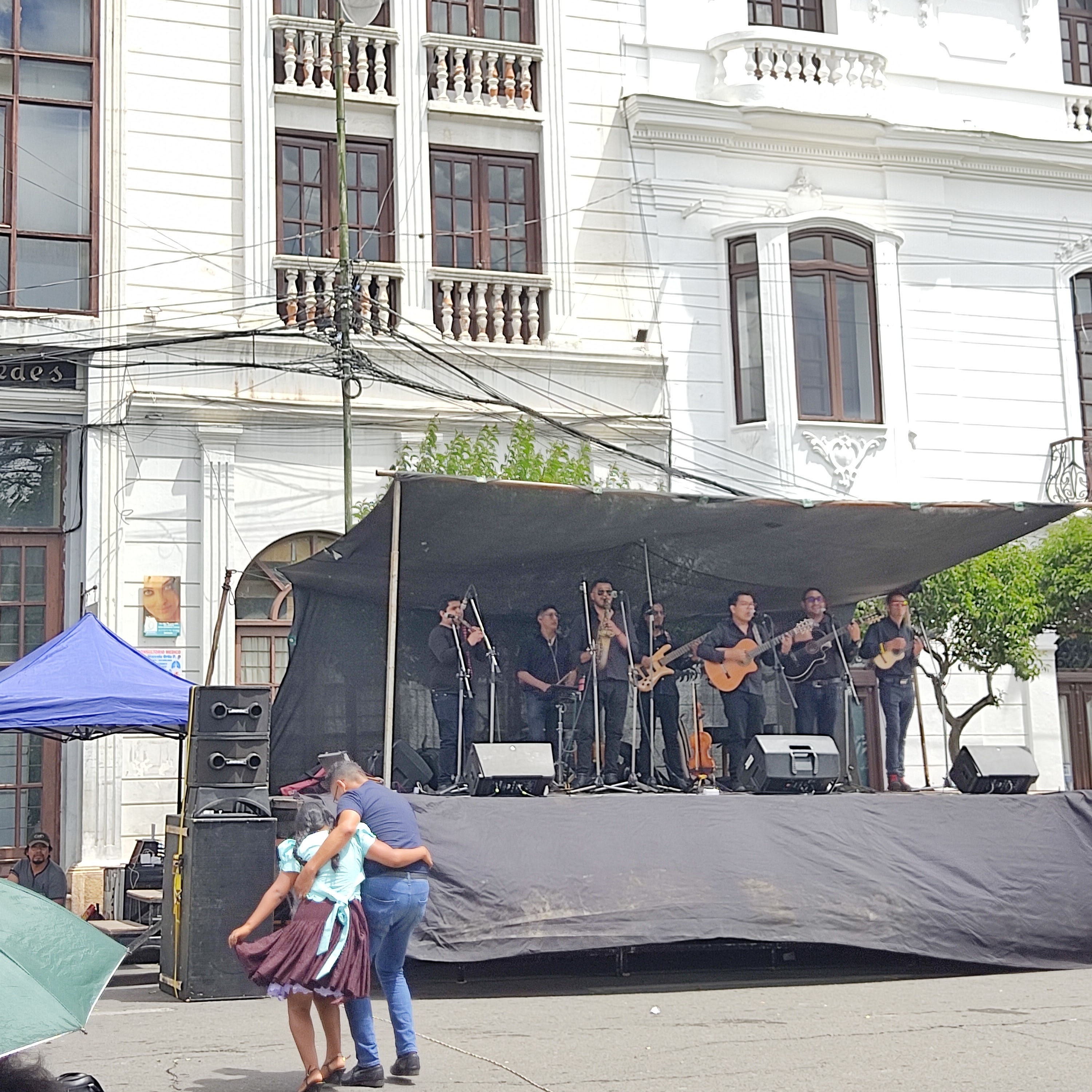
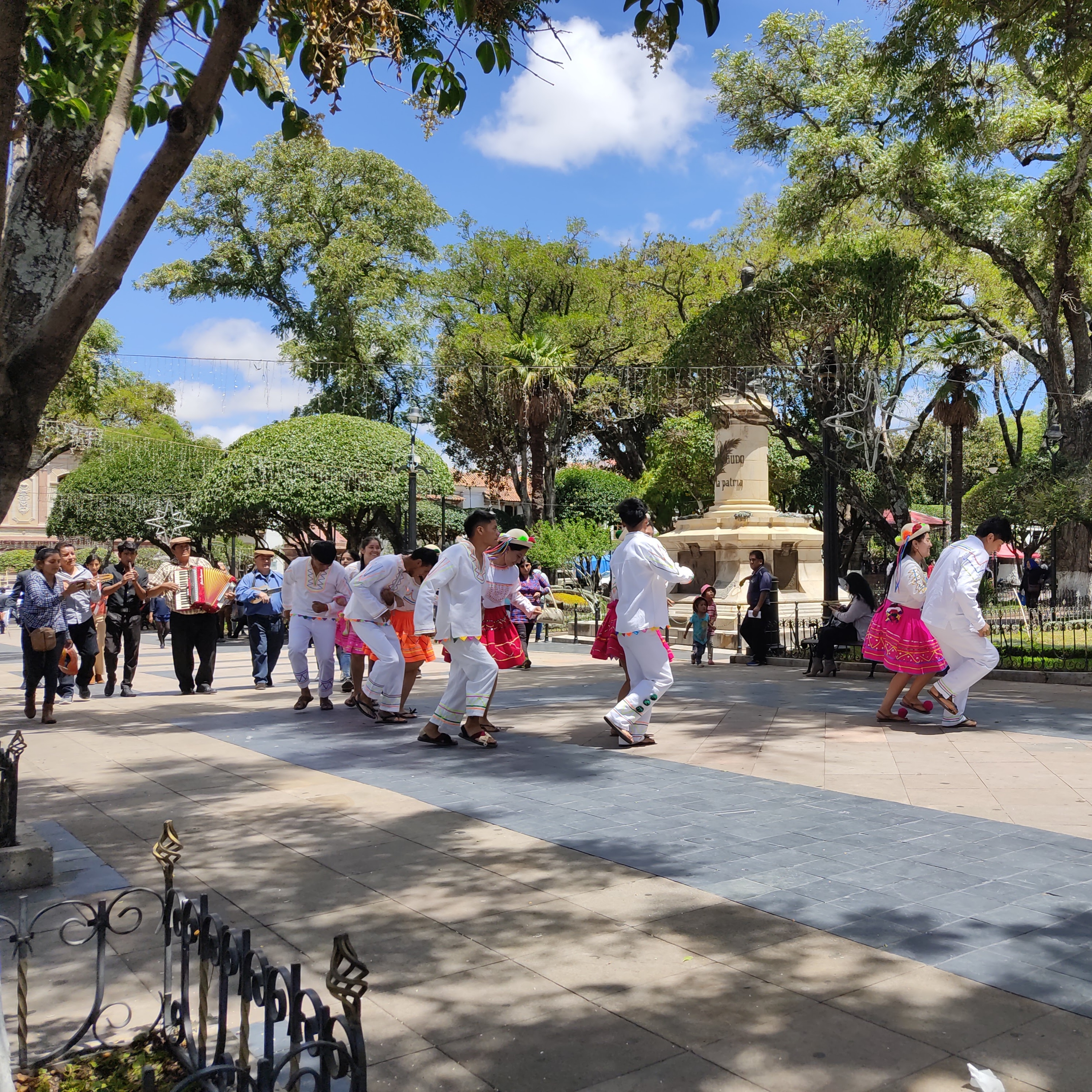 The stage was set-up for various artists to perform throughout the day, with the audience encouraged to dance along throughout the set (and some even carried on dancing in between acts, too)., dances, and families enjoying the atmosphere. Parque Simon Bolivar is another interesting place to hang out. The park was designed by the prince who lived in Castillo La Glorieta, who lived in France for many years. As such, the park and surrounding neighbourhood is full of some (not so subtle) French imagery, including Parisian manors, fountains, and even a mini Eiffel tower in the centre of the park to remind him of his time living there.
The stage was set-up for various artists to perform throughout the day, with the audience encouraged to dance along throughout the set (and some even carried on dancing in between acts, too)., dances, and families enjoying the atmosphere. Parque Simon Bolivar is another interesting place to hang out. The park was designed by the prince who lived in Castillo La Glorieta, who lived in France for many years. As such, the park and surrounding neighbourhood is full of some (not so subtle) French imagery, including Parisian manors, fountains, and even a mini Eiffel tower in the centre of the park to remind him of his time living there.
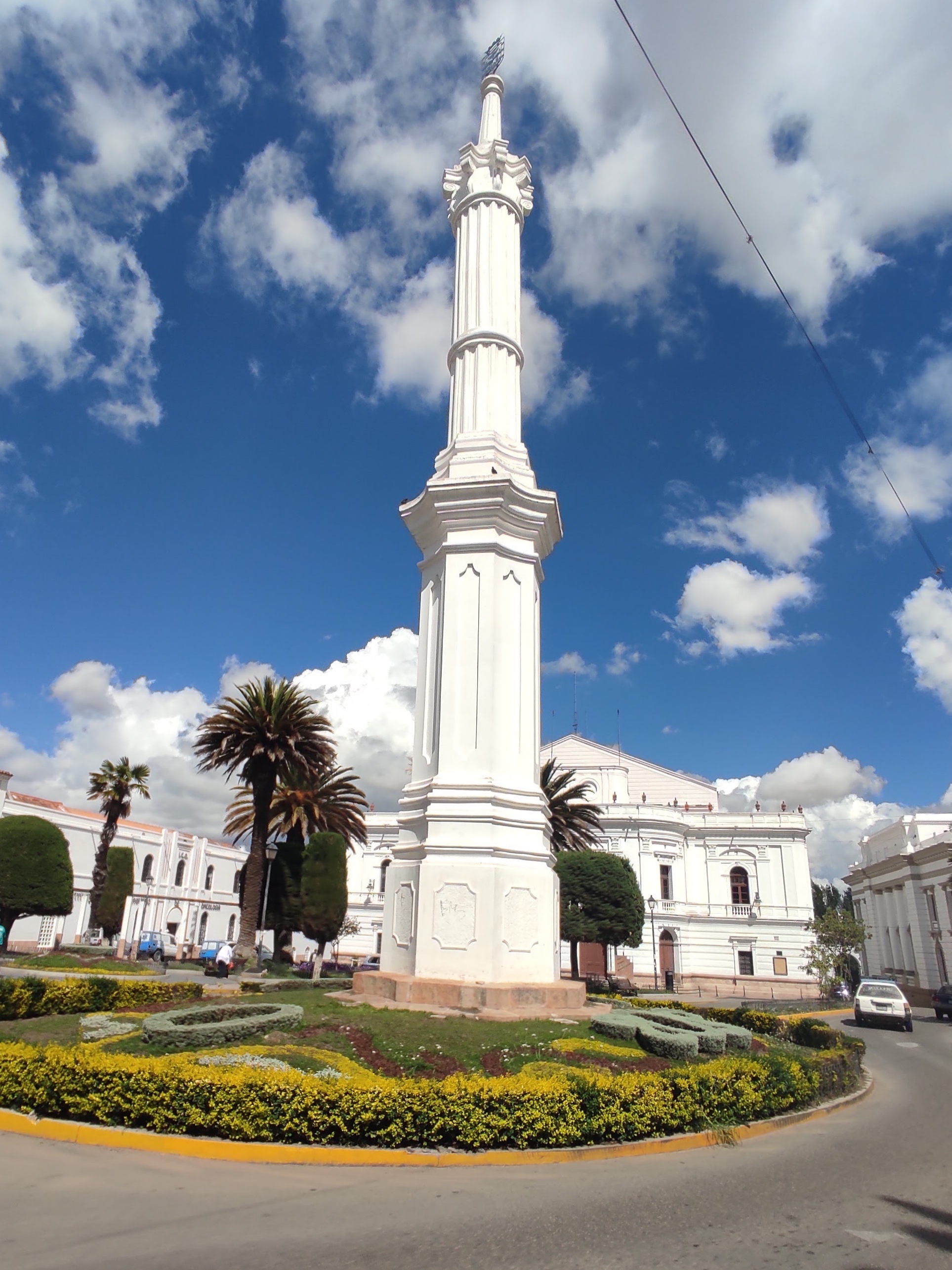
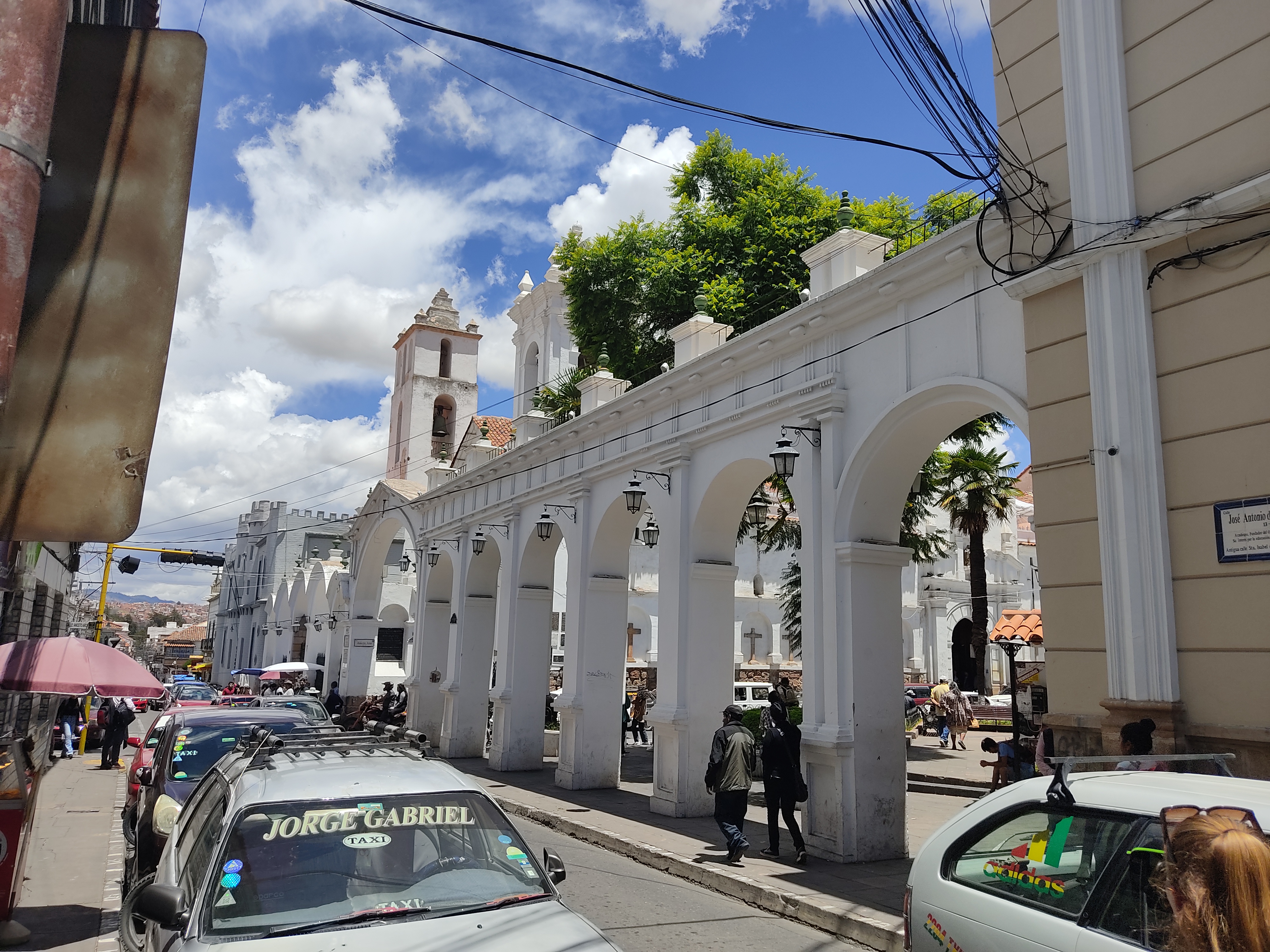
It might seem strange at first, but the cemetery in Sucre is a peaceful place to spend a few hours. We went on a walking tour of Sucre, which included a tour of the cemetery, where we learned loads of fascinating facts and stories about it. Bolivian cemeteries could not be more different compared to Western ones, and feel more like huge parks than graveyards. The entrance is lined with impressive and intriguing mausoleums, dedicated to the most important historical figures and families. Further into the park, there are thousands of small tombs, stacked up like mini apartment complexes, each with a small window where relatives place items that were important to the deceased, such as alcohol, toys, personal items, and things related to their hobbies. The tombs are more like a celebration of life than a memorial of death, and each one tells a little story about the personality of the deceased.
Markets
As with the rest of Bolivia, the locals in Sucre buy their food from the markets. Sucre has 3 markets, with mercado central being the main one in the town centre. Mercado central is full of snacks, smoothies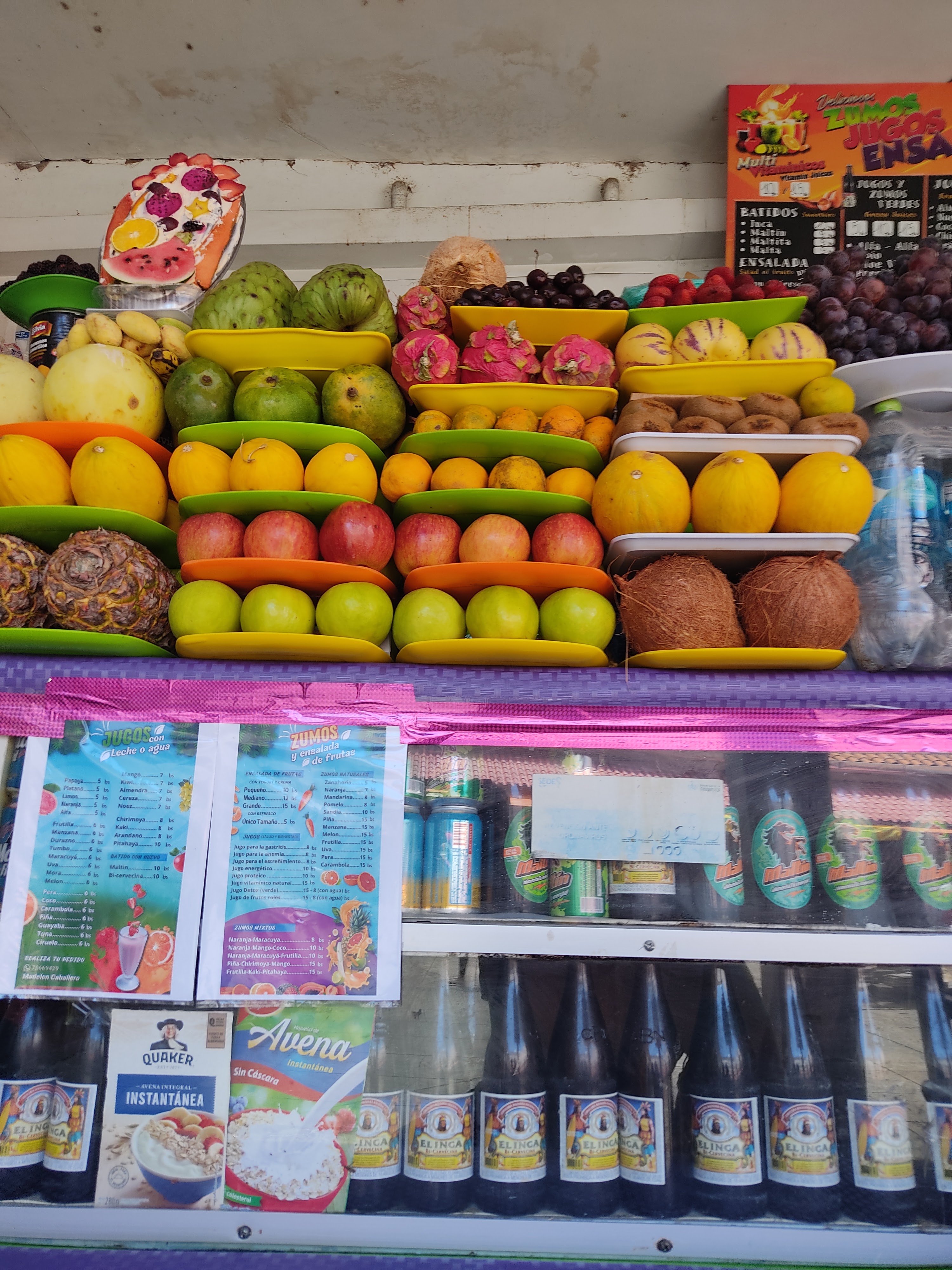 We were very pleased to see the smoothie stands, which we became very familiar with in Peru, were still as popular as ever., fruits and vegetables, but is more of a touristic market, where travellers go to practice speaking Spanish to the local sellers. The advantage of this was that all the people working there are very friendly, have lots of good avdvice for tourists, and will understand even the poorest attempts at speaking Spanish. Although most things you would need can be found at mercado central, mercado campesino offers a more authentic Bolivian experience, but is best reached by local bus. Mercado campesino is further from the centre, and is more like the big markets in La Paz or El Alto. Here, they sell everything, from cosmetics to clothes, to homeware and of course, food.
We were very pleased to see the smoothie stands, which we became very familiar with in Peru, were still as popular as ever., fruits and vegetables, but is more of a touristic market, where travellers go to practice speaking Spanish to the local sellers. The advantage of this was that all the people working there are very friendly, have lots of good avdvice for tourists, and will understand even the poorest attempts at speaking Spanish. Although most things you would need can be found at mercado central, mercado campesino offers a more authentic Bolivian experience, but is best reached by local bus. Mercado campesino is further from the centre, and is more like the big markets in La Paz or El Alto. Here, they sell everything, from cosmetics to clothes, to homeware and of course, food.
Overview
During our travels, we had encountered many people who recommended Sucre very highly as a place to spend some time in. After our visit, we could easily see why it is loved by so many. From the sunny green parks to the rooftop viewpoints, the laid-back city provides the ideal place to get a glimpse of Bolivian culture, and a bizarre reminder of home. Equal parts relaxing and intriguing, this is a city that should not be missed.
Related.
24th March 2024
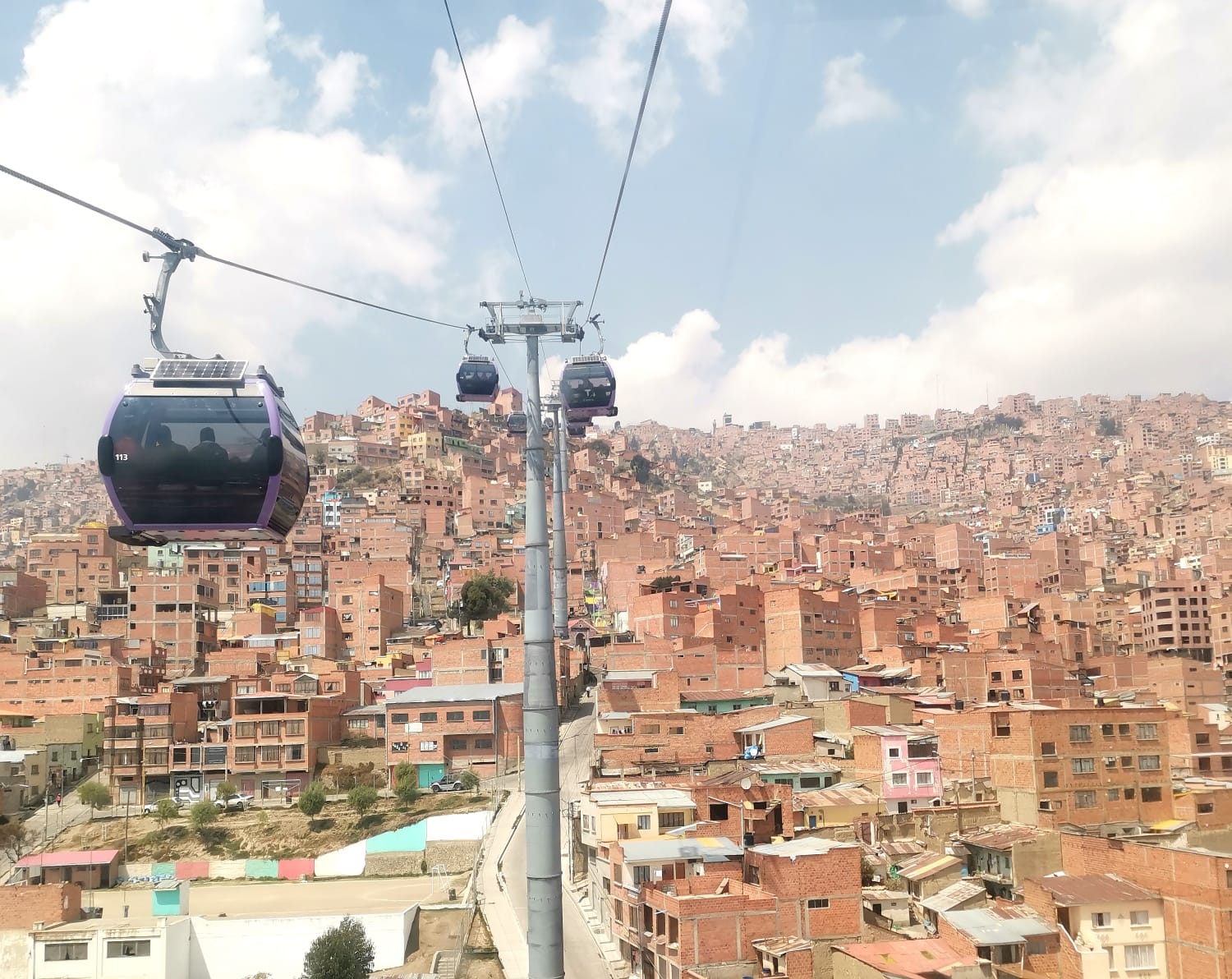
With so much character, La Paz is truly one of the most intriguing cities to visit in South America...
18th April 2024
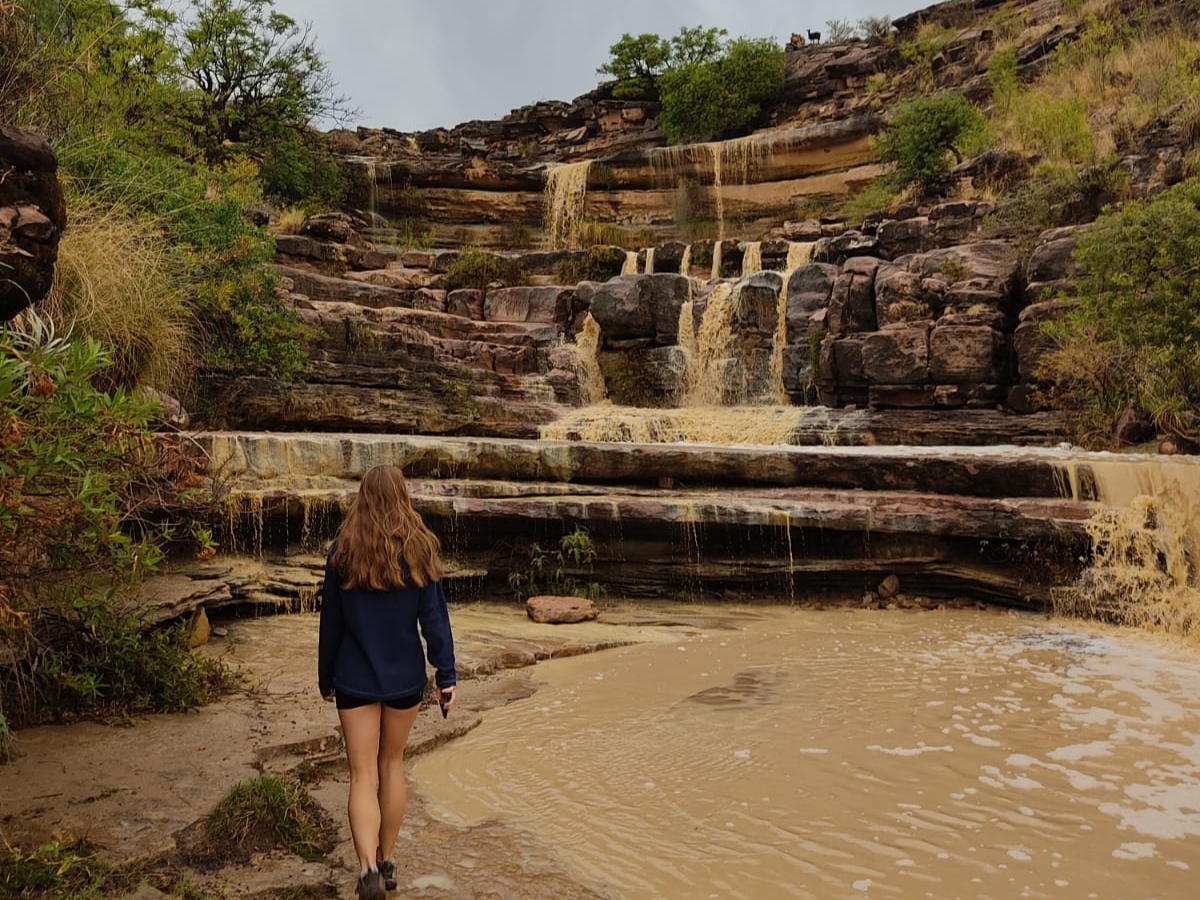
It's not one of South America's most popular or well-known national parks, but a few hours from the city of...
11th May 2024
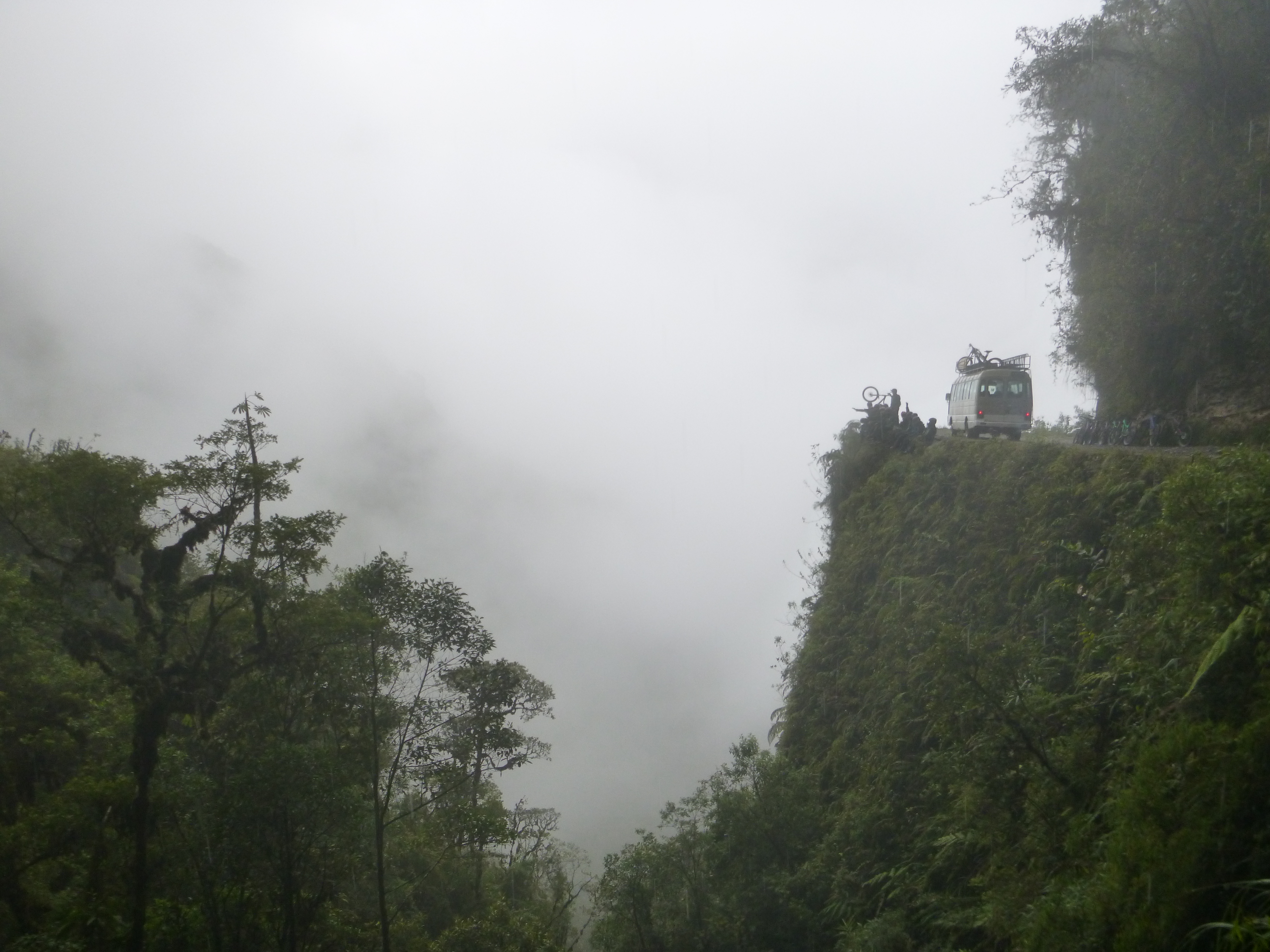
With Bolivia not being on everyone's bucket list, it has plenty of room for pleasant suprises...
4th May 2024
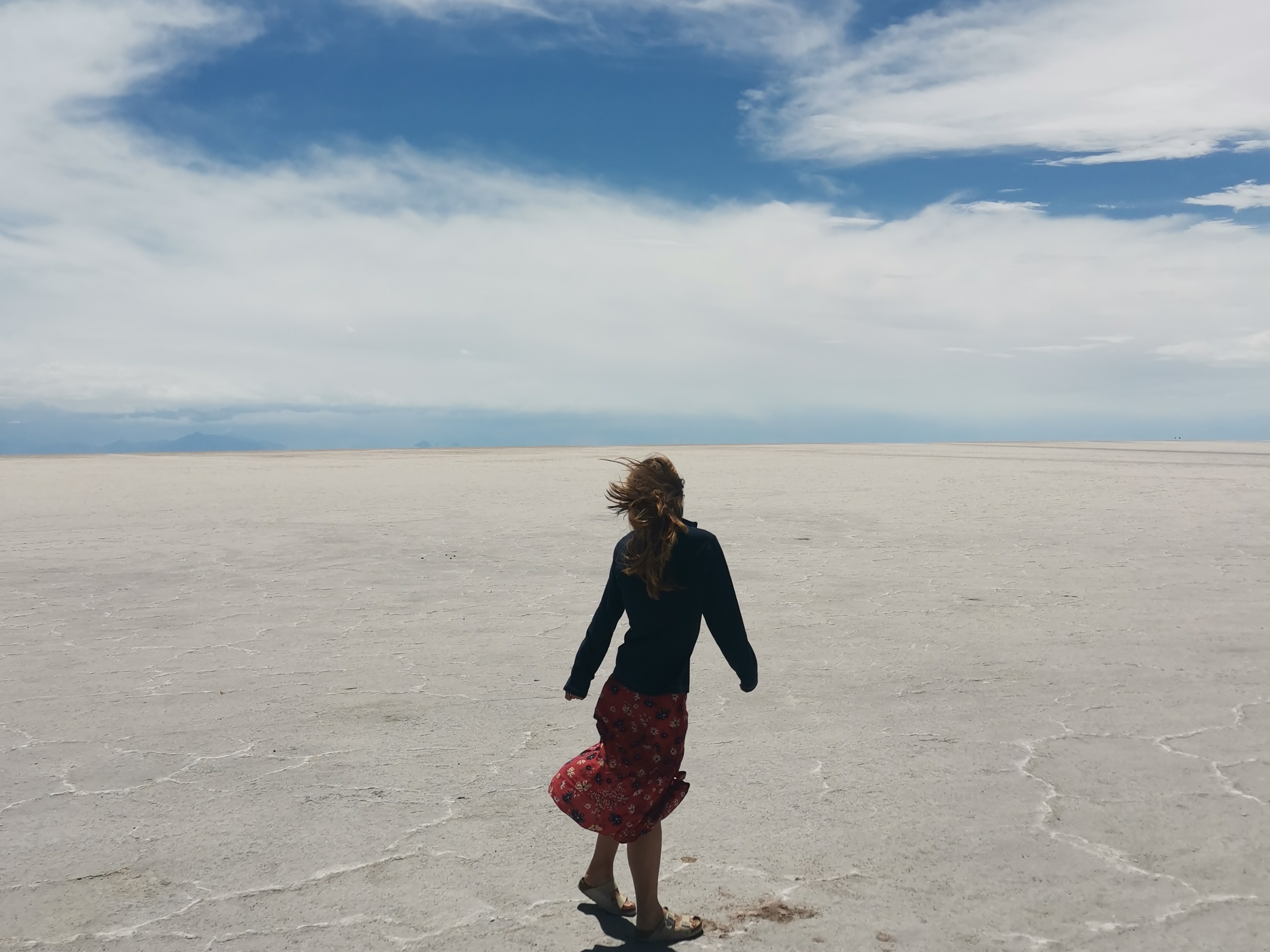
Despite most of Bolivia feeling relatively off the beaten track for tourists, the Salar de Uyuni...
